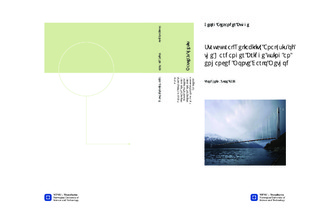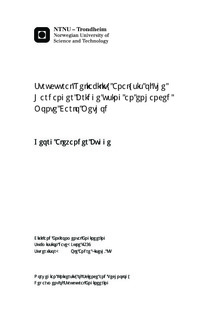| dc.description.abstract | In the present study, a reliability analysis of the Hardanger Bridge was performed, by assessing the probability that multimodal flutter will occur. The self-exiting forces which reduce the effective damping and stiffness of the bridge, are formulated in terms of flutter derivatives. Measurements of flutter derivatives are available through section testing, and contrary to previous studies, also measurements for horizontal derivatives were used in the present work. The derivatives are modelled as stochastic variables. Two different modelling choices have been suggested. The thesis shows that only one of these provides reliable estimates.Using random realisations of the stochastic distribution of flutter derivatives as input, the multimodal flutter equation was solved for a large number of simulations, providing distributions of critical speed to use in the reliability analysis. Since horizontal flutter derivatives were available, it was investigated whether horizontal modes impact the flutter limit. Thus, probabilistic distributions have been prepared for four different mode combinations, two of them including a number of horizontal modes. The study provides no evidence to suggest that horizontal effects are significant. Due to the low probabilities involved in the flutter reliability analysis, the computational effort using traditional methods is very substantive. Therefore, an enhanced Monte Carlo method developed at NTNU was employed. Here, the original limit state function, $M=V_{Cr}-V_S$, was parameterized. Thereafter, the correct failure probability was estimated by means of extrapolation from the parameterized limit states. The use of the enhanced method to perform a flutter reliability analysis is, to the knowledge of the author, not described in literature previously. Based on the current simulations, the reliability index $\beta$ was found in the range from 5.8-6.3, giving a failure probability per year as low as $1 \cdot 10^{-10}-5 \cdot 10^{-9}$. However, there is an inherent uncertainty in these values, both due to uncertainty in the applied calculations, as well as the more general uncertainty in the field of flutter analysis. The calculations suggest that $N_{sim}$ could be increased to achieve better accuracy. In all three phases of the project, namely the modelling of flutter derivatives, solving of the eigenvalue problem defining multimode flutter, as well as the employment of the enhanced Monte Carlo method, MATLAB was used as the prime tool. Many of the MATLAB scripts being used in the study were prepared by Ole {\O}iseth at NTNU. | nb_NO |

